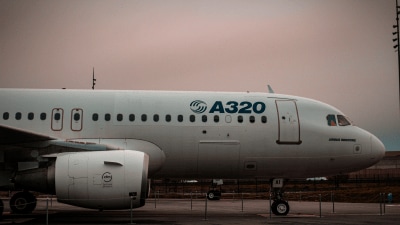Stay updated with the latest - Click here to follow us on Instagram
On their day,spare a thought for our vanishing wetlands
Dotted with estuaries,marshlands and rivers and surrounded on three sides by the Arabian Sea,Mumbai,with its own coral reef,is truly a city of wetlands.
Dotted with estuaries,marshlands and rivers and surrounded on three sides by the Arabian Sea,Mumbai,with its own coral reef,is truly a city of wetlands. But they are disappearing fast,losing out to development.
Experts are saddened by the lack of awareness about wetlands. Such is the apathy that few people today know that the expression covers a wide range of water systems . For most people today,only mangroves mean wetlands, says mangrove expert Vivek Kulkarni,who is involved in the development of Mangrove Wetland Centre (MWC),Mumbais first wetland park,at Bhandup.
On World Wetlands Day,celebrated every February 2,Newsline reviews Mumbais wetland ecosystems and their status.
MANGROVE FORESTS OR MANGLES
Found in Colaba,Worli (Napeansea Road,Raj Bhavan),Thane (extending across the 26-km creek from Mahul to Thane city),Andheri (across Lokhandwala Complex,Versova),Santracruz,Bandra (Carter Road,Bandra-Kurla Complex),Marve,Aksa,Goregaon,Kandivali,Borivali,Dahisar and Mira-Bhayander.
The main functions of mangles are flood control and holding water during high tide and rains. Environmentalists complain of systematic destruction of mangroves in Mumbai,Thane and Navi Mumbai,despite a High Court ruling calling for a total freeze on cutting of mangroves in Maharashtra. Together,the three regions are estimated to have only 60 sq km of mangroves.
SEA GRASSES
Kulkarni says inter-tidal sea grasses are very common,though rarely noticed,in Mumbai. The species of sea grass called Aeluropus is important for stabilisation of mudflats. These grasses consolidate the soil and make them firm enough for mangroves to grow. While most of the areas where sea grasses grow have been reclaimed,they still are some in parts of Vikhroli,a few stretches of Mahul and to the west of the Eastern Express Highway. These grasses were found aplenty between Kanjurmarg and Mulund. They have now mostly been reclaimed, he says.
MUDFLATS
Still found in Sewree,Mahul,Airoli,Marve Creek,Manori,Gorai,Bandra-Kurla complex,Thane creek and Vasai Creek,mudflats are coastal wetlands that form when mud is deposited by tides or rivers. Due to sedimentation,mudflats are rich in molluscs and tiny marine fauna,and attract a lot of birds for roosting and feeding. Today most mudflats have fallen victim to constant industrial sewage disposal.
SALINAS
Salinas or saline blanks are slight depressions formed adjacent to mangrove areas where the stream meets the sea. Due to high salinity,such ecosystems are rich in specific salt-tolerant animals like aetemia prawns that attract unusual birds. Mumbai has salinas in Vikhroli,Mankurdh,Marve,Daravalli,Aksa,Manori,Dahisar and Mira-Bhayander.
ESTUARIES
An estuary is a body of water formed where freshwater from rivers and streams flows into the ocean,mixing with the seawater. Estuaries are protected from the full force of ocean waves and winds by a reef,barrier islands or sand surrounding them. In Mumbai,the Vasai Creek and the Mithi ending near Bandra-Kurla can be termed estuaries. Today,these estuaries resemble a sewage line.
LAKES AND PONDS
Pallavi Latkar,a city-based architect,town planner and environmental researcher,who has mapped the course of Powai,Vihar and Tulsi lakes,says,Mumbais lakes show a high degree of utrification and have a very high demand for bio-chemical oxygen. They require regular bio-remediation. In urbanised areas,the lakes often lose their natural habitat to cemented edges. She points out that lakes and ponds play an important role in maintaining the water-table of a city. The original map of Mumbai has hundreds of tiny lakes and ponds that have been filled now and they dont even figure in the citys development plan anymore.
RIVERINE SYSTEMS
Rivulets (formed by or resembling a river),including Mithi,Dahisar and Poisar,form riverine wetlands of the city. Today,all these small rivers are heavily polluted,resembling sewer lines,points out Latkar.







